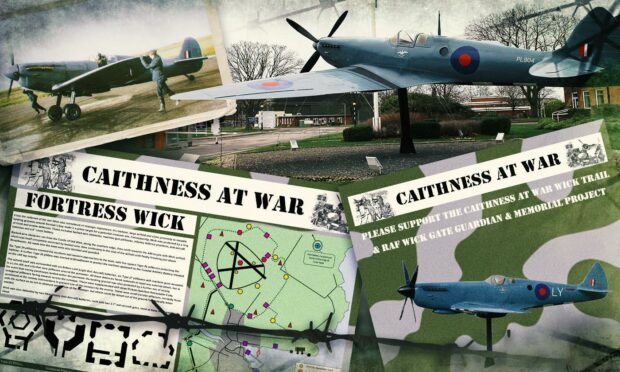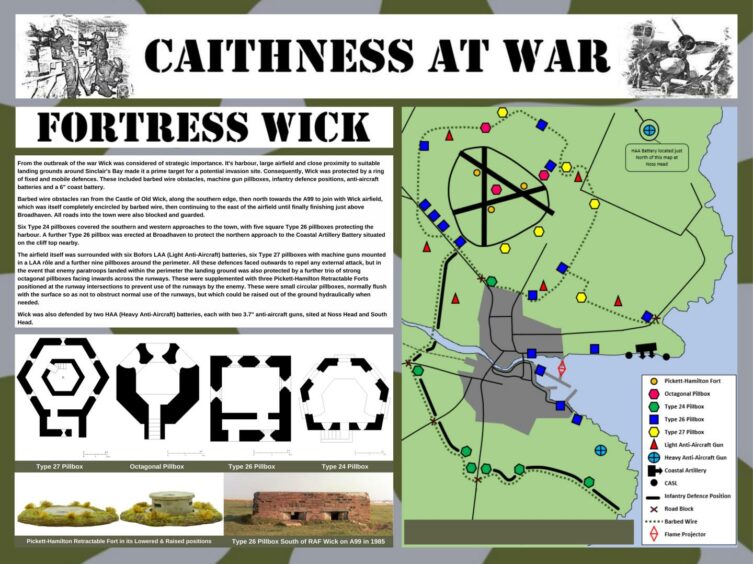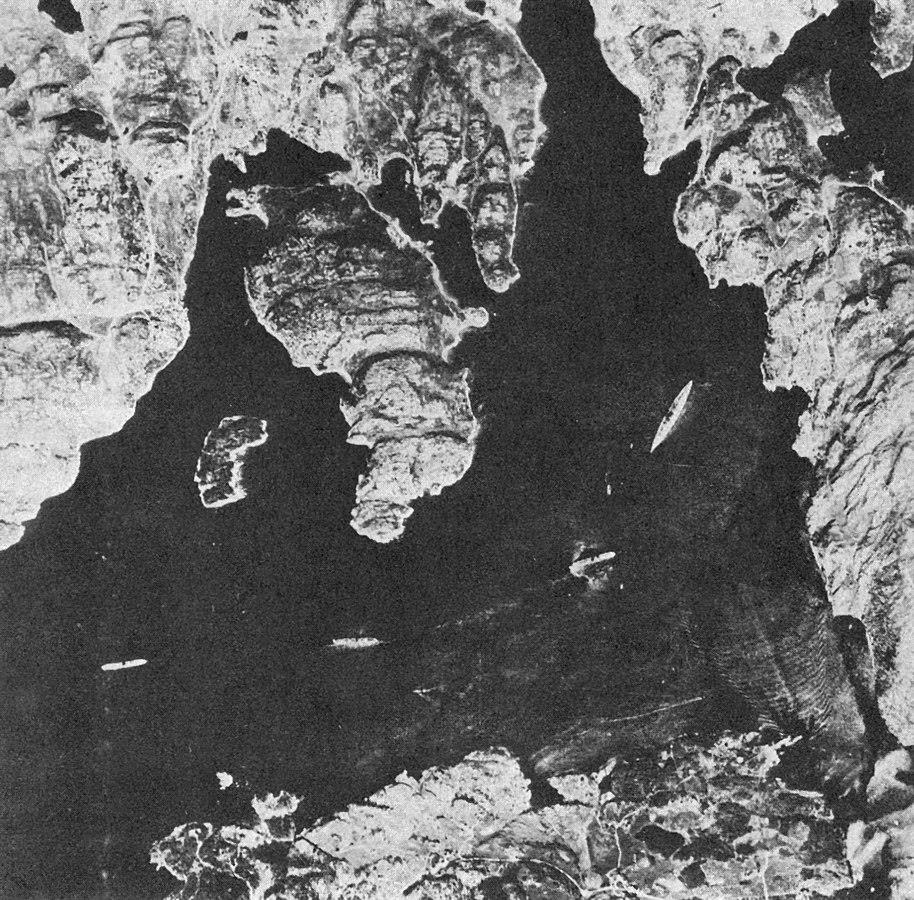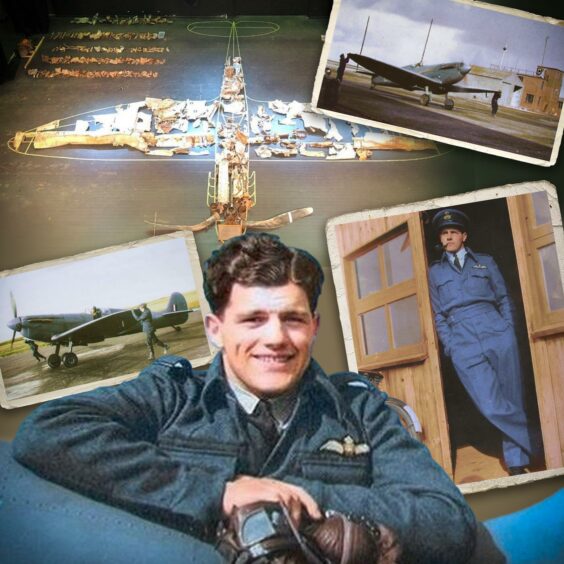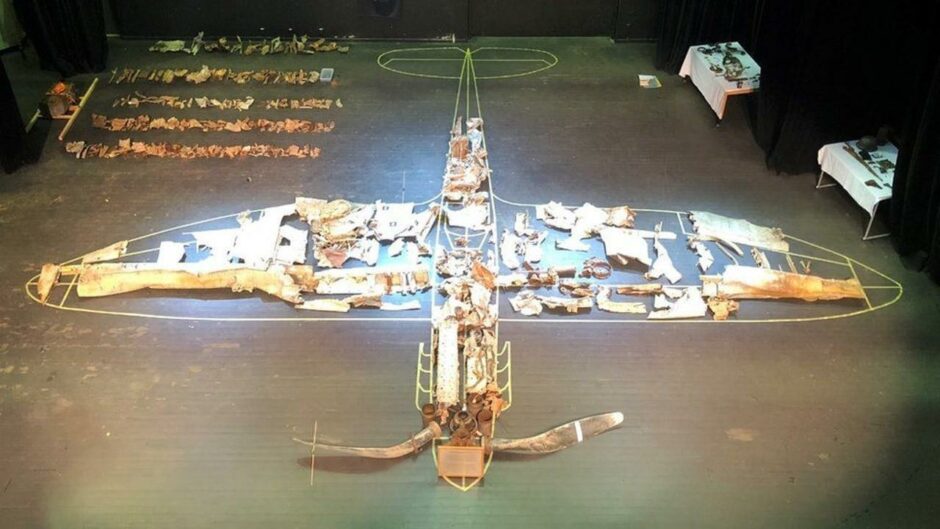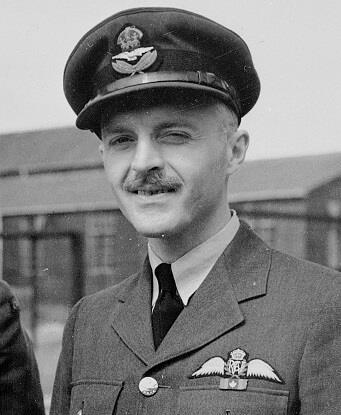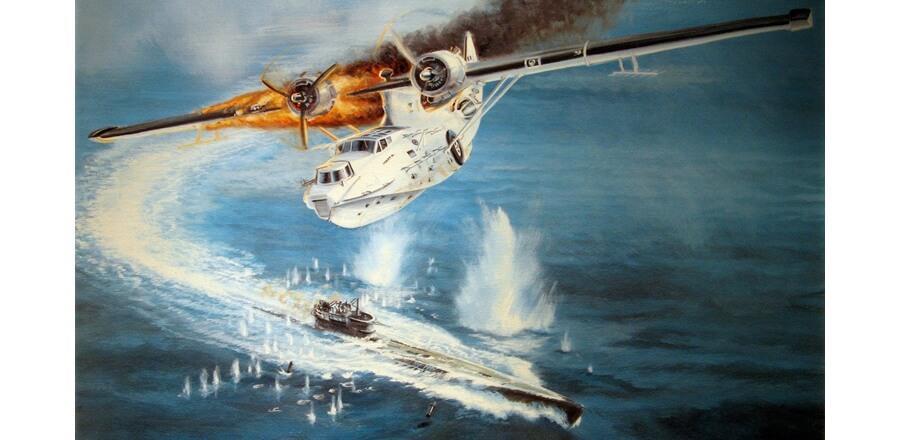The Caithness town of Wick and its RAF base played a massively important role in the Second World War, and two community initiatives are working to bring this to world attention.
A Second World War trail around Wick, by Wick Development Trust, is in preparation for opening this summer, and an international campaign is under way to buy a replica Spitfire to be placed as Gate Guardian for Wick airport.
Not just any Spitfire — Spitfire AA810, a plane with huge significance to the area thanks to its links with the Great Escape from Stalag Luft III.
Scotland was vulnerable to invasion
War leaders knew of the north coast of Scotland’s vulnerability to invasion, so Wick was turned into a formidable fortress to protect it, and fend off invaders by sea or air.
The town was ringed with 34 machine gun pillboxes, six Bofors light anti-aircraft guns, two heavy anti-aircraft guns, and at least six light anti-aircraft machine gun posts armed with either Bren or Lewis guns.
The approaches to Wick harbour were protected by ex-naval guns stationed in the coastal artillery battery at Broadhaven, while a pair of huge search lights shone beams up to five miles out across Wick Bay, lighting up any German ships or surfaced U-boats trying to approach.
For the new trail, 23 educational information panels will be placed at various sites, describing what happened in Wick during the war.
RAF Wick, on the site now occupied by John o’ Groats airport, was hastily requisitioned when war was declared on September 1 1939 and was operational by the end of the month.
By Christmas, Wick was responsible for aircraft movements for a huge area, from the Borders to Shetland and the Western Isles.
Both Fighter and Coastal Commands occupied the station for almost a year, before Fighter sector HQ moved to Kirkwall and Wick was left as a key sector HQ for Coastal Command until the end of the war.
The task was to undertake long-range meteorological and reconnaissance flights over Norway, the North Sea and North Atlantic.
Sinking of the Bismarck
One of the most famous missions flown out of RAF Wick was by Pilot Officer Michael Suckling, who managed to find and photograph the German battleship Bismarck, which led to its sinking six days later by the Royal Navy.
These photos became among the most famous reconnaissance photographs of the war, with Winston Churchill labelling them “the pictures that sank the Bismarck”.
RAF Wick’s dogged defence of the realm came at a price, with the loss of 379 aircrew to enemy action.
To mark and honour these losses, local communities are now crowdfunding to buy a replica of reconnaissance Spitfire AA810, which flew out of RAF Wick and was shot down over Trondheim on May 5 1942 on a recce to find the Bismarck’s sister ship, Tirpitz.
And therein hangs the extraordinary tale of the pilot, Flying Officer Alastair (Sandy) Gunn, originally from Dunbeath, Caithness, son of a doctor, who moved to Aviemore.
Sandy baled out, was captured by the Germans and sent to Stalag Luft III prisoner of war camp, site of the famous ‘Great Escape’.
Sandy was involved in the digging of the famous Tom, Dick and Harry tunnels and was one of the 76 prisoners who escaped on the evening of March 24 1944.
He was recaptured a few days later, and on April 6 was driven out into the countryside and executed by the Gestapo, on the personal orders of Adolf Hitler, along with six of his fellow officers.
To bring this tale of heroism and tragedy full circle, in 2018 the wreckage of Sandy’s Spitfire was found and recovered from a peat bog in Norway.
It was shipped back to Britain, where it is currently undergoing restoration to flying condition by Spitfire AA810 Restoration Ltd.
It is planned to have the Spitfire airworthy by 2024, at which point it will make regular visits up to its former home base at Wick.
Wick Development Trust has launched a crowdfunding campaign to raise £60,000 for the replica for Wick airport.
Heroics of pilot
Many aircrews from the Royal New Zealand Air Force (RNZAF), and the Royal Canadian Air Force (RCAF) flew out of RAF Wick during the war, and their respective associations are promoting the crowd-funding campaign in their own countries.
Canadian Victoria Cross winner and national hero David Hornell RCAF flew from Wick in a twin-engine amphibian aircraft on anti-submarine patrols over the North Atlantic.
In June 1944, on patrol near the Faroes, Flt Lt Hornell’s aircraft was attacked and badly damaged by the German submarine U-1225.
Fire engulfed the starboard engine and wing, and the petrol tanks were at risk of exploding, but Hornell and his crew pressed home their attack and managed to sink the submarine with depth charges.
The situation suddenly worsened when the starboard engine fell off and Hornell had to fight with all his might to keep the aircraft under control.
Through what was described by his crew as ‘superhuman efforts’ he managed to bring the burning aircraft down safely on the heavy swell.
The crew quickly abandoned the aircraft before it was fully ablaze; however, only one small, four-man dinghy had survived, which was not large enough to hold the eight man crew.
They had to take turns in the frigid waters of the North Atlantic, claiming the lives of two of the crew through hypothermia.
By the time the survivors were rescued, almost a day later, Hornell was blind and weak from exposure and hypothermia and would tragically die five hours after being picked up.
He is buried in Lerwick Cemetery on the Shetland Islands.
More like this:
The link between a Caithness bog and The Great Escape- and the two men who uncovered it
